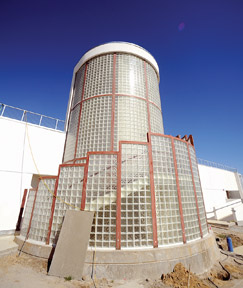Hazel Hawkins Hospital receives perfect score
Hazel Hawkins Hospital receives perfect score
For the first time, Californians can compare infection rates at their hospitals in reports released this month by the state Department of Public Health.
The statewide data highlight the need to do more to safeguard patients from largely preventable infections often caused when sloppy practices or contamination let harmful bacteria slip into a patient’s bloodstream.
Because hospitals self-report infections, some may appear to have low rates, as they don’t monitor as well or are less forthcoming, the report cautions.
The documents are meant to spur improvement and to help patients and families scrutinize risky practices.
State leaders expect a clearer picture to emerge as successive years reveal trends.
An estimated 12,000 Californians die annually from such illnesses, the state found in 2010.
The new reports are required by a 2008 law sponsored by state Sen. Elaine Alquist, D-San Jose.
“Hospitals need to be safe, and they need to be held accountable,” Alquist said in an email. “We should be able to get hospital safety ratings in the same way that we get car safety ratings.”
The reports are the first in the nation to show how often hospital intensive-care employees follow a safe-practices checklist for inserting so-called central lines, which are catheters put in a blood vessel.
Central line infections are among the deadliest.
Employees at Hazel Hawkins Memorial Hospital in Hollister followed the entire checklist 100 percent of the time in 46 reported instances, while Saint Louise Regional Hospital in Gilroy had a 91 percent adherence rate in 69 reported instances.
In the South Bay, hospitals with the lowest compliance rates included San Mateo Medical Center at 59 percent, O’Connor Hospital in San Jose at 75 percent, Regional Medical Center in San Jose at 75 percent and Kaiser Santa Clara at 76 percent.
In the East Bay, employees at Alameda Hospital followed the entire checklist 54 percent of the time, and workers at Kaiser Permanente in Antioch did so 77 percent of the time.
Hospitals with more than 99 percent compliance included San Ramon Regional, Hayward’s St. Rose, Oakland’s Highland, Kaiser Walnut Creek and Antioch’s Sutter Delta.
All other South Bay hospitals had rates exceeding 90 percent.
“The real target is truly 100 percent,” said Jon Rosenberg, chief of the state’s hospital infection program. Health experts say patients and relatives can make sure hospital workers follow sterile procedures and should ask health care providers what they do to ensure safety. Many hospital leaders welcome such exchanges.
“We’d love the patients and family members to speak up if something concerns them,” said Dr. Lucy Tompkins, medical director for hospital epidemiology and infection control at Stanford Hospital.
In addition to MRSA, the reports cover other types of infections frequently transmitted in hospitals, including Clostridium difficile and vancomycin-resistant Enterococcus (VRE).
Most Bay Area hospitals ranked average when compared to similar institutions statewide. But that’s not good enough, advocates and some health experts argue.
“When it comes to infections, average is not where you want to be,” said Lisa McGiffert, director of the Consumers Union’s Safe Patient Project. “The goal is zero.”
Hospitals that ranked significantly better than average in their medical or surgical critical care units included O’Connor Hospital in San Jose, Santa Clara Valley Medical Center in San Jose, and Seton Medical Center in Daly City and Moss Beach. None had central line infections last year.
Stanford had one of the strongest showings for central line infections, ranking better than average in three areas of the hospital.
It does several things beyond the safety checklist, including bathing intensive care patients every day with an antiseptic wipe, and having patients use mouthwash to reduce bacteria and fungi, Tompkins said.
“We follow our own rates of infection very carefully every day. If we spot any trends at all, then we go and investigate.”
Santa Clara Valley Medical Center in San Jose encourages employees to speak up if they see someone not following safety guidelines, said Nancy Johnson, infection prevention manager.
The report identifies several hospitals with central line infection rates that were significantly worse than the state average in one area of the hospital.
Kaiser Walnut Creek and John Muir Medical Center in Walnut Creek ranked poorly with two infections each in their neonatal critical care units among infants weighing 1,001 to 1,500 grams at birth.
A John Muir neonatologist noted that the infection data is a year old.
The hospital has since made changes, including auditing employee hand-cleansing practices. On Jan. 30, John Muir will have gone a full year without any central line infections in its neonatal critical care unit, said Dr. Nick Mickas.
Kaiser also saw success in reducing central line infections since the report. Leaders visit sites to ensure that safety practices are being followed and to learn of issues that may hinder attaining a zero infection rate, according to a statement from Barbara Crawford, vice president for quality and regulatory services.
Since 2010, the Kaiser’s 21 Northern California hospitals have seen a 51 percent drop in non-ICU central line infections and an 11 percent reduction in intensive care unit infections, Crawford said.
Also in the worse-than-average category for central line infections was the pediatric general care unit at Kaiser in Oakland and Richmond, which had eight infections, and the medical/surgical critical care unit at Sutter Delta Medical Center in Antioch, which also had eight.
Sutter Delta was the only East Bay or South Bay hospital with a worse-than-average ranking for MRSA cases, reporting 10 from April 2010 to March 2011.
To view the reports, visit www.cdph.ca.gov/Pages/NR12-001.aspx










